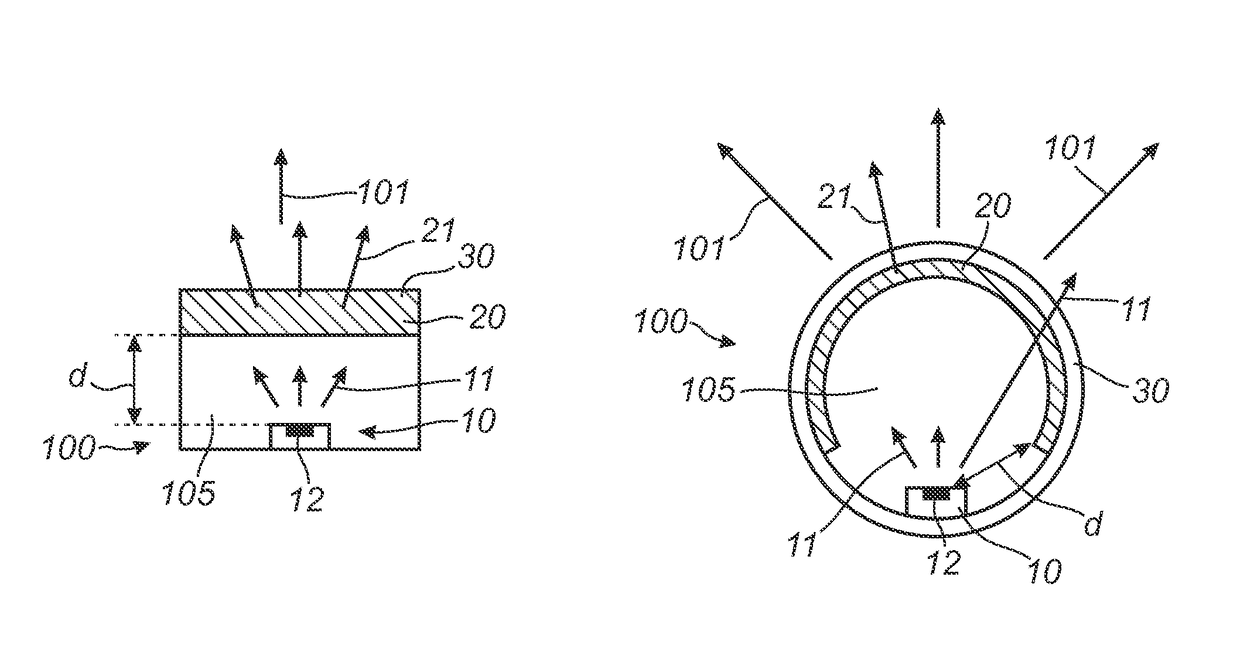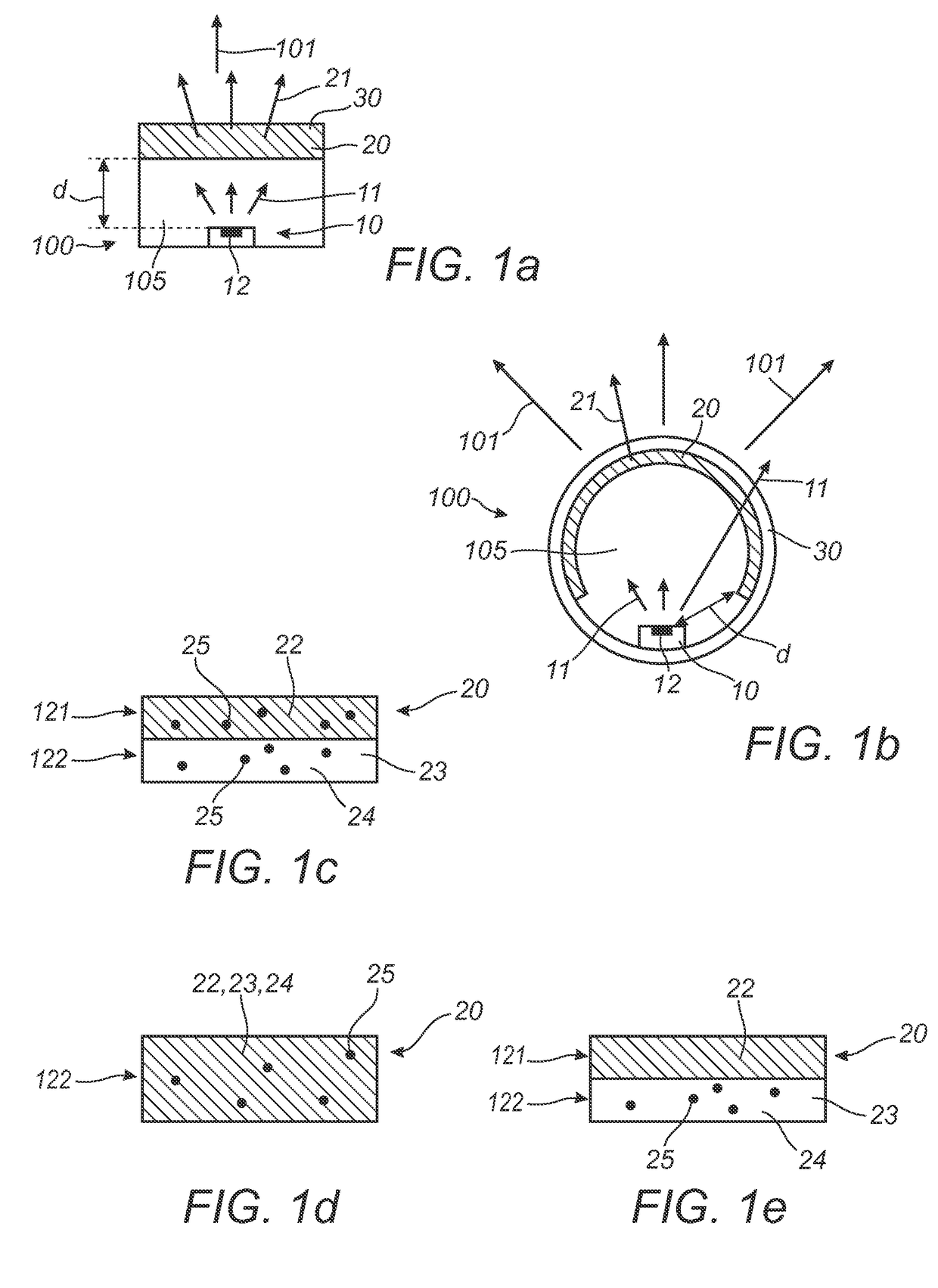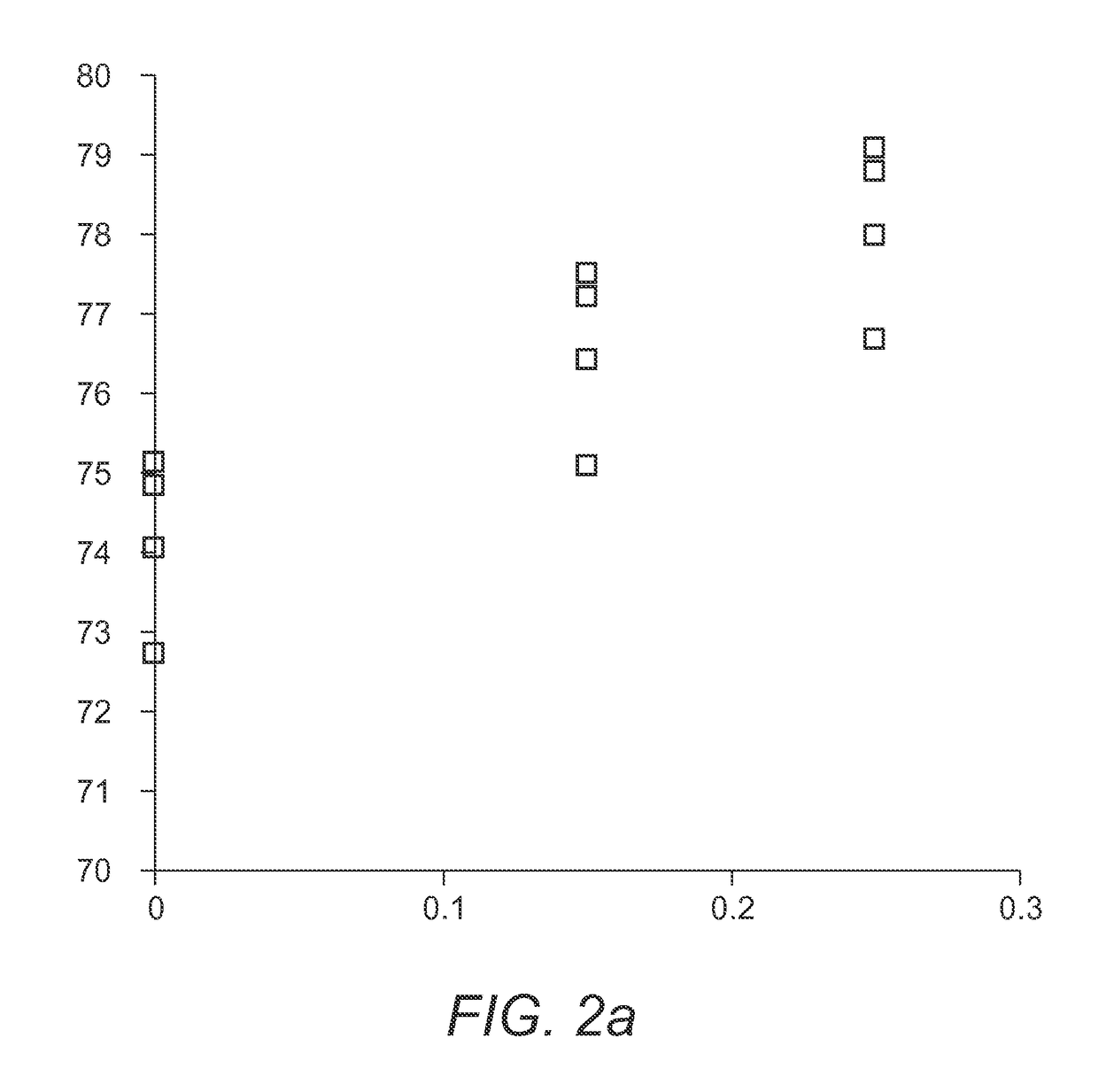Light converter and lighting unit comprising such light converter
a technology of light converters and light converters, which is applied in the direction of lighting and heating apparatus, semiconductor devices for light sources, and light sources, etc., can solve the problems of low color rendering index (cri), low efficiency of such materials, and low price of such materials, and achieve long-term stability
- Summary
- Abstract
- Description
- Claims
- Application Information
AI Technical Summary
Benefits of technology
Problems solved by technology
Method used
Image
Examples
embodiment 1
YAG / LuAG Coated onto Polymer Film Containing Lumogen F305
[0052]In a remote phosphor TLED a polymer film (PET) containing Lumogen F305 was used. On the foil a coating containing the inorganic garnet phosphor was applied by roll-to-roll coating. When used in combination with short wavelength LEDs (440-450 nm) replacement of ˜20 wt. % of the YAG by LuAG resulted in lamps with a CRI>80 (without LuAG the CRI was lower than 80). An additional advantage of the addition of the mixing of LuAG and YAG is the reduced shift of the color point with wavelength of the blue LED.
embodiment 2
YAG / LuAG / F305 in Polymer Film
[0053]Instead of coating the inorganic phosphors onto the polymer film, the phosphor was incorporated in the polymer using for example a film extrusion process.
embodiment 3
CRI 90 Lamp
[0054]A coating of YAG and LuAG (approximately 20 wt. % LuAG, depending on the peak wavelength of the blue LEDs used) was applied onto a PET polymer film containing F305, in which the yellow / green layer and red layer thickness were chosen such, that 2700K light will be generated, which resulted in white light with a CRI of 90 (for any LED wavelength in between 440 and 460 nm).
PUM
| Property | Measurement | Unit |
|---|---|---|
| CRI | aaaaa | aaaaa |
| particle sizes | aaaaa | aaaaa |
| CRI | aaaaa | aaaaa |
Abstract
Description
Claims
Application Information
 Login to View More
Login to View More - R&D
- Intellectual Property
- Life Sciences
- Materials
- Tech Scout
- Unparalleled Data Quality
- Higher Quality Content
- 60% Fewer Hallucinations
Browse by: Latest US Patents, China's latest patents, Technical Efficacy Thesaurus, Application Domain, Technology Topic, Popular Technical Reports.
© 2025 PatSnap. All rights reserved.Legal|Privacy policy|Modern Slavery Act Transparency Statement|Sitemap|About US| Contact US: help@patsnap.com



